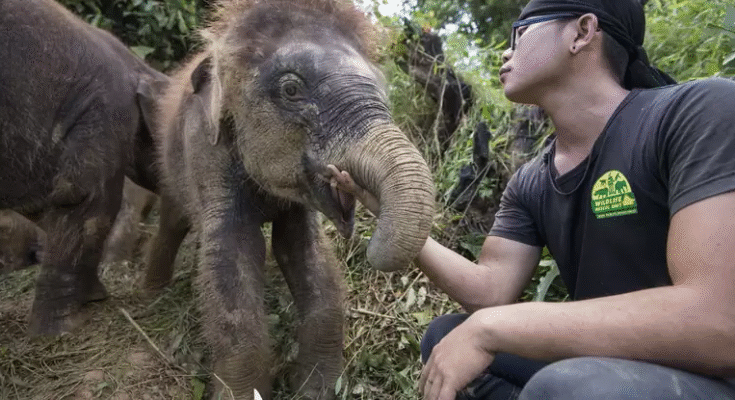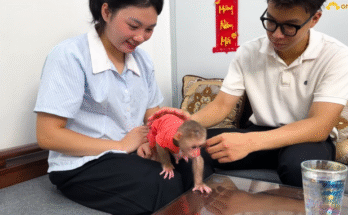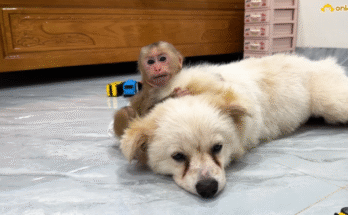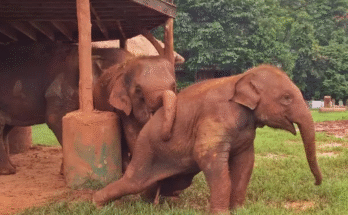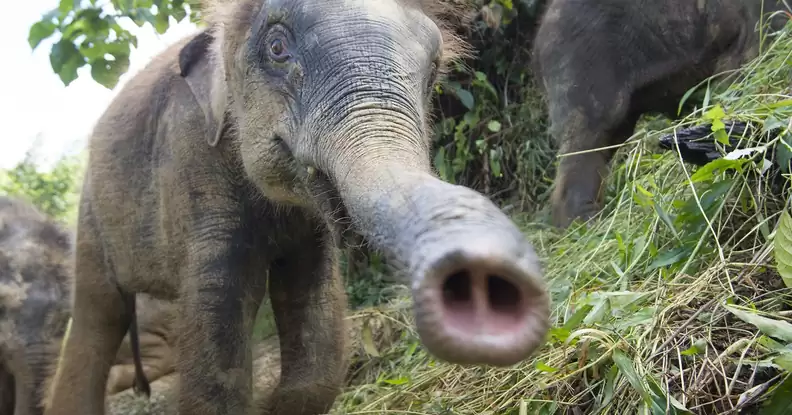
The Wildlife Rescue Unit (WRU) – an animal rescue group based in Sabah, a region in Malaysian Borneo – arrived at the scene. But instead of immediately helping the baby elephant, the teamwaited to see if Adun’s family would return and rescue him themselves. After all, remaining with his elephant family would be the best possible option for Adun.
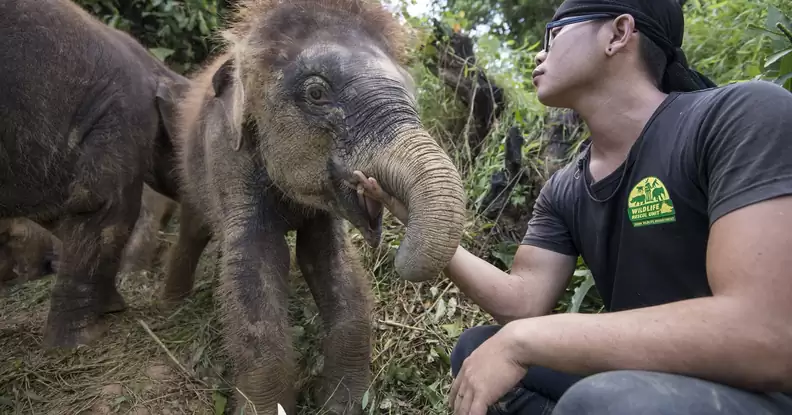
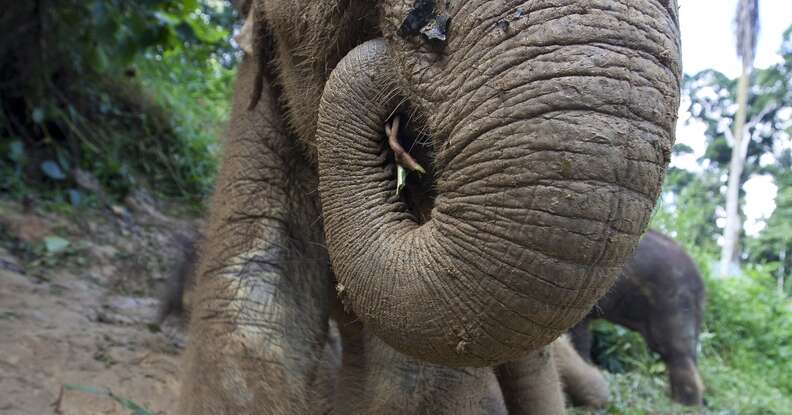
As in Africa, elephant families in Borneo are often killed for their ivory. But Bornean elephants also face other threats – farmers will kill elephants who come onto their plantations and eat their crops. In the wild, Bornean elephants live in the forest, and they eat grasses, bamboo and fruit. But as more and more forest is torn down for palm oil plantations, elephants will resort to eating crops because they have nothing else.

And when baby elephants lose their families, they often don’t last long on their own. A lot of times, the babies are terminally ill and they die shortly after rescue, Benedict explained. “We recently lost three babies to a deadly virus,” she said.

“In all cases, we find these orphans wandering alone without their mother or group,” Benedict said. “Most logical explanations would be that they were left by their group due to irresponsible or aggressive control measures by humans, or their mothers died due to gunshots.”
The WRU tries to help as many elephants as it can, but the Bornean elephants are facing huge challenges.

At present, there are only about 1,500 Bornean elephants left in Borneo, and 95 percent of them live in Sabah, according to Goossens. In fact, Bornean elephants are one of the most endangered subspecies of the Asian elephant, Goossens said, making them some of the rarest elephants in the world.

There are currently five orphaned elephants being cared for at the WRU’s elephant care unit at the Sepilok Orangutan Rehabilitation Centre – Adun, Budak, Tunku, Dumpas and Danum. Budak is the youngest at 11 months, and Danum is the oldest at 2 and a half years. Coincidentally, all five orphans are males.
But, no matter their ages, they need to be cared for like infants, Benedict said.

“This includes every two to four hours feeding with milk or with solid feed, exercise, health monitoring and cleaning of their enclosures,” Benedict explained. “The first three months following rescue is a very crucial time for these baby elephants, but we are lucky to have very dedicated and passionate rangers to be part of the Wildlife Rescue Unit team. They play the biggest role in the process, being the surrogate mothers to the orphans.”

While the elephants feed, they’re kept inside an indoor enclosure, but they get to enjoy plenty of time outdoors.

“Budak prefers to be on his own rather than playing with the rest of elephants,” Benedict said. “Tunku is the typical naughty boy who likes to get into all kinds of trouble. Meanwhile, Dumpas is a big bully who thinks he is the strongest because he is the biggest. Adun, on other hand, loves to seek attention from the rangers, thus we call him the ‘Attention Seeker.’ Danum acts more like a big brother of the group, being gentle towards the younger and smaller ones.”

“They love rolling on the mud and playing by the pond,” Benedict added. “They slide inside [the pond] whenever it’s too hot or they’re tired playing on the ground.”

The orphans will spend several years in care, according to Benedict, and they’ll only be released when they demonstrate the ability to forage on their own, and are no longer dependent on people.

The group is also planning to build an elephant sanctuary in Kinabatangan, a district in the eastern part of Sabah – the WRU will soon be featured in a video series called “Borneo Wildlife Warriors,” which the team hopes will help bring more attention to the needs of the elephants.

“We hope this place will soon be ready to cater for these babies as space in our current unit is very limited, and we have already reached our carrying capacity,” Benedict said.
They may have limited space, but the WRU will continue to care for as many orphaned elephants as it can. The team also rescues adult elephants who are in trouble, as well as orangutans, sun bears, slow lorises, macaque monkeys, turtles and other wildlife in Sabah.

“It does feel good to see a baby grow from being very skinny and sick to healthy with a nicely built body mass,” Benedict said. “It’s also great to see them running happily in the small patch of forest that we have at the edge of the reserve. Nothing is better than to see the animal that you rescued return back to where they belong.”
